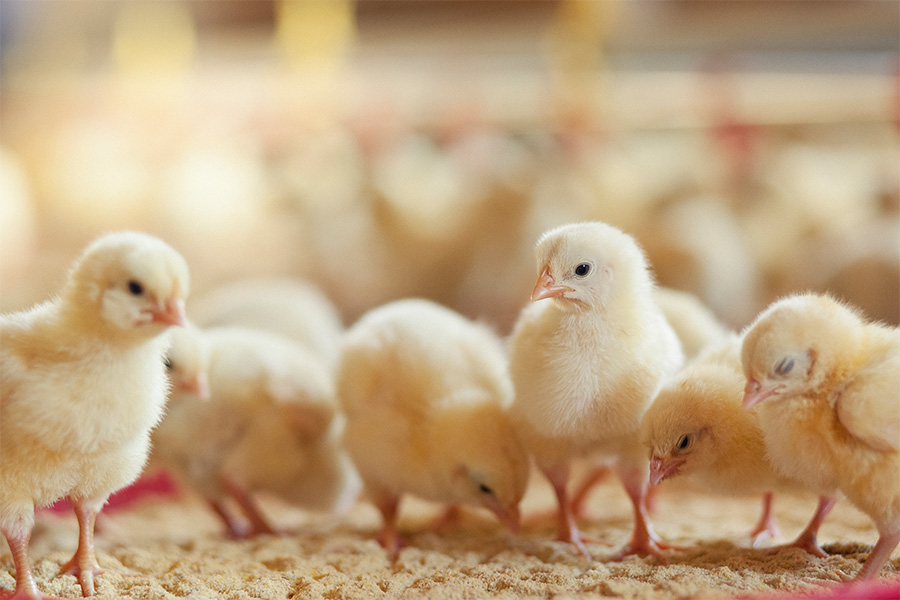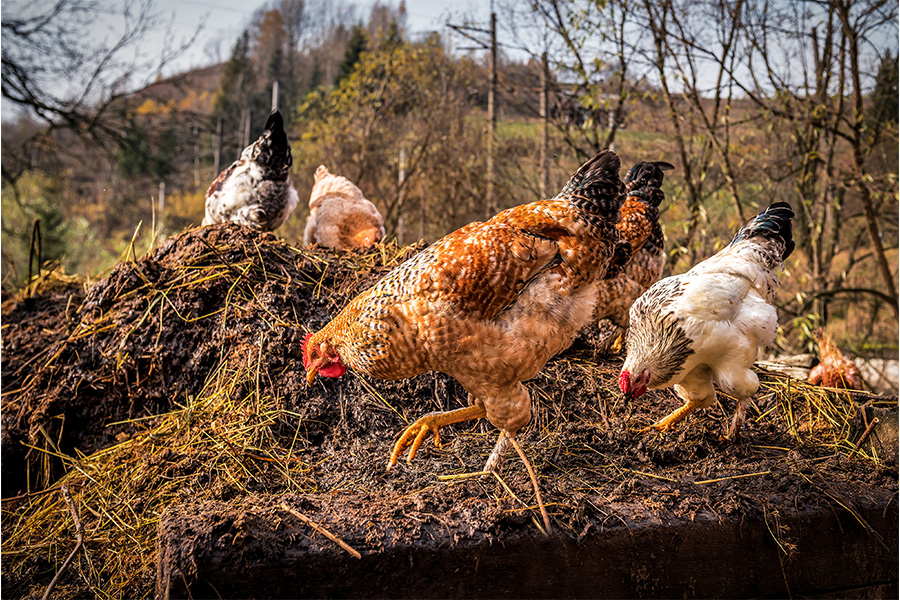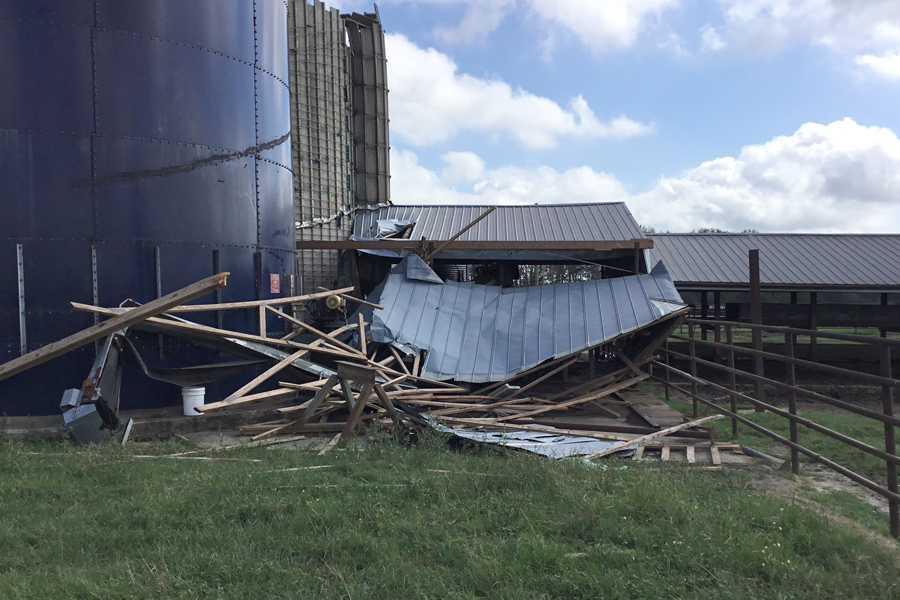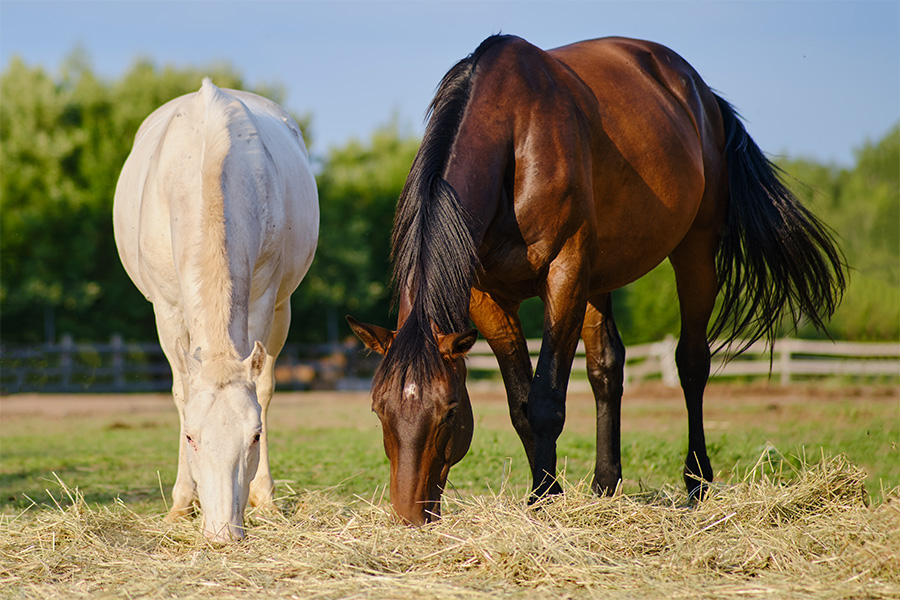Animal Production
-

Producing more than 8 billion pounds of chicken meat requires the support of hatching egg producers. Hatching egg production is a very different business from broiler meat production, as it requires different management skills and greater labor commitments. Because of the uniqueness of the hatching egg business and the long-term investment demands for an operator, it is important that prospective producers understand the managerial and financial requirements before committing to this enterprise. The information in this publication should help those considering hatching egg production as a new enterprise.
Casey W. Ritz
|
-

This publication provides current information about the appropriate application and most effective use of poultry fertilizer. It will also help poultry producers develop a simple nutrient management plan that meets permitting authority standards.
Casey W. Ritz
|
-

High levels of dust in cage-free poultry house air can carry airborne microorganisms and endotoxins that, once inhaled, may trigger respiratory diseases in animals and/or their caretakers. Mitigating dust levels is imperative to protecting the health and well-being of the animals and their caretakers and improving the environmental stewardship of cage-free layer farms. Studies have concluded that good manure management and proper ventilation can alleviate dust problems. Mitigation strategies have various levels of effectiveness, but some are cost prohibitive. Selecting the right dust control strategy should consider poultry types, housing design, local climate, and litter/bedding management strategies.
Casey W. Ritz and Lilong Chai
|
-

As a result of significant weather events, many producers in Georgia may experience losses of pasture growth, hay stocks, feed supplies, and livestock. After such events occur, farmers will be assessing damage to fields, stock, and property for many days, weeks, months. This publication is intended to provide recommendations to farmers that have experienced adverse affects due to significant weather in their forage and livestock production systems.
Jennifer J. Tucker, Dennis Hancock, and Lawton Stewart
|
-

Many retained ownership programs offer producers the opportunity to receive a level of data from the feed-yard and packing plant that is rarely available after those animals leave the farm. Producers can use this information to make genetic changes in their herd to better the marketability of their calves. However, before this information can be utilized, producers must understand what these terms mean. The terminology might be slightly different on various reports, but the common ones used for herd improvements are discussed below.
Carole Knight
|
-

One tool that aids producers in the efficient and profitable production of beef cattle is live animal carcass ultrasound. The use of carcass ultrasound is an economical way cattlemen can make genetic improvements in carcass traits, which will, in turn, put profits in their pockets.
Carole Knight
|
-

With so many feed, supplement and hay choices available, many people find themselves wondering exactly what their horse needs for good health and nutrition. Many horse-feeding opinions and myths make deciding what to feed even more difficult. This publication explains your horse’s nutritional needs, common guidelines to observe when feeding your horse and how to determine if your horse’s nutritional requirements are being met.
Kylee Jo Duberstein
|
-

Poultry production facilities must deal with the disposal of farm mortalities on a daily basis. Death loss in animal production is an unfortunate reality that requires appropriate handling to prevent the spread of disease, the potential for odor and pest problems, and the possible contamination of surface and ground water. Each disposal method has advantages and disadvantages. Regardless of the method used, Georgia law requires disposal of dead poultry within 24 hours of death or discovery.
Casey W. Ritz
|
-

Mortality disposal following a natural disaster or catastrophic disease event can become a major challenge for poultry producers. Disposal decisions must balance animal health goals with those of environmental protection and safeguarding public health. In the event of catastrophic disease, humane destruction of infected or exposed poultry and proper disposal is needed to stop further spread of infectious organisms. Establishing pre-emptive culling and controlled slaughter programs for suspect cases may be feasible and can assist in limiting the potential spread of disease. At times healthy birds may need to be slaughtered prematurely to create a safe buffer zone.
Casey W. Ritz
|